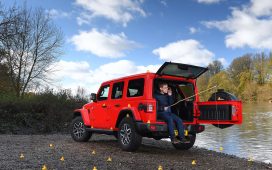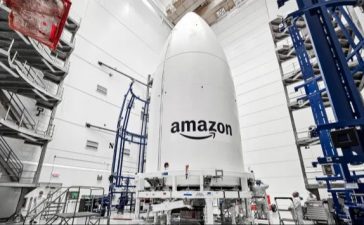One year ago at CES in Las Vegas, Stellantis showed the world what a Chrysler EV might look like — a transformation that will occur by 2028 when it becomes an all-electric brand.
Now, we’re getting a peek at the company’s vision for future car cabins. The upshot? Chrysler, the 97-year-old brand under global automaker Stellantis, wants its in-car technology to make “real life” easier.
The brand is showcasing its vision at CES 2023 through Chrysler Synthesis, a two-seater demonstration of in-car tech and how drivers and passengers might use it. As part of the demonstration, the company created a typical day in this future car life that includes a virtual personal assistant that uses biometric recognition, automated driving that allows the driver to conduct video calls and entertainment and wellness experiences like mediation, games and karaoke. There’s even a feature that allows customers to create and synthesize their own music
While this may be a design exercise aimed at exciting consumers and shareholders, the core technology is a real part of Stellantis’ strategy. Stellantis has said it will invest more than $33.7 billion through 2025 into software and electrification. The end goal is to have 34 million connected cars on the road by 2030 that Stellantis can generate revenue from for years after they’re sold to consumers.
To hit that lofty goal, Stellantis is developing three components that will be integrated into future products, starting with the underlying electrical and software architecture called STLA Brain. This underlying system is integrated with the cloud that connects electronic control units within the vehicle with the vehicle’s central high performing computer via a high-speed data bus. It will allow the company to upgrade software to vehicles “over the air,” or wirelessly.
On top of this “brain,” Stellantis will add its “SmartCockpit,” a platform built in partnership with Foxconn that will deliver applications to the driver such as navigation, voice assistance, e-commerce marketplace and payment services. A third automated driving platform called “AutoDrive,” developed with BMW, will complete the automaker’s software plan.
All three of these platforms will be in new Stellantis vehicles by 2024.
Visitors to CES 2023 get to see the “brain,” “smart cockpit” and “autodrive” in action through the Chrysler Synthesis concept, which includes a 37.2-inch sculpted black glass infotainment screen for both front-row occupants. The two-seater cockpit, inspired by Chrysler Airflow Concept unveiled last year that represents the brand’s future design direction, is outfitted with sustainable materials. No chrome allowed.
The suspended vegan seats are wrapped with an arctic upcycled chrome-free soft trim, the instrument panel is constructed from 100% post-industrial plastics and ocean plastics, and the flooring is “responsibly sourced” walnut. LED lighting completes the look.
However, the real goods showcased in the Chrysler Synthesis is the software.
The software in the Chrysler Synthesis — and theoretically, future Chrysler vehicles — includes a virtual personal assistant, the ability to learn the owner’s behaviors and preferences and frequent wireless software updates to provide new and fresh content.
The assistant is designed to make everyday life easier like installing updates and synching to calendars for schedule and route planning, allowing multi-tasking while driving autonomously, recommending parking and charging options, assisting with e-commerce services, connecting to devices and smart homes. (It should be noted that Tesla vehicles, new Mercedes models with the MBUX infotainment system and other vehicle models have some of these ‘smart’ features).
Chrysler also envisions a more automated driving future. The Chrysler Synthesis demonstrates so-called Level 3 automated driving that allows the driver to keep their hands of the steering wheel and eyes off the road.













